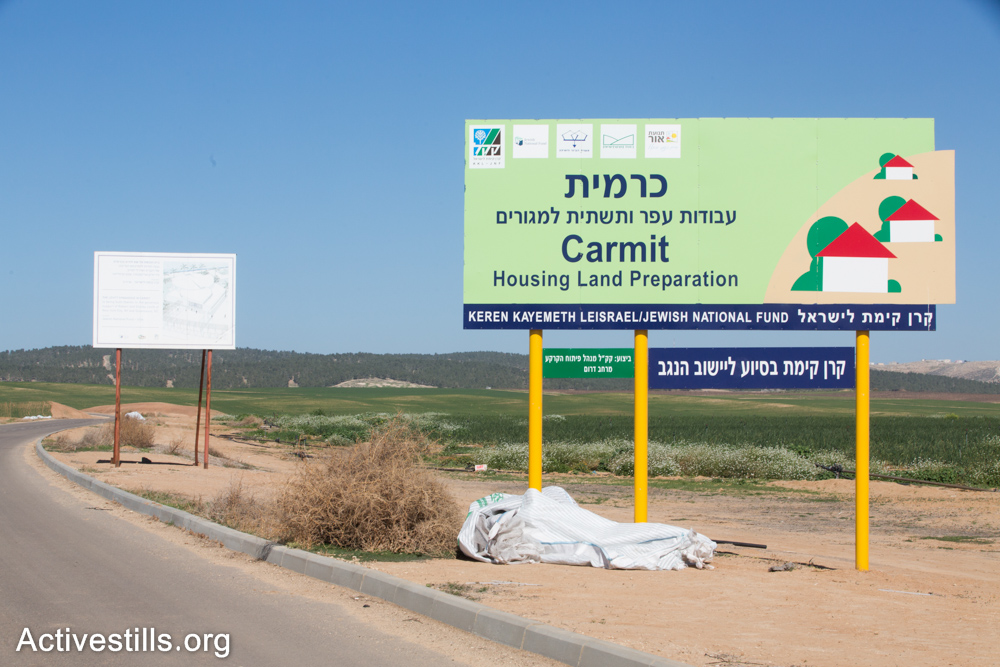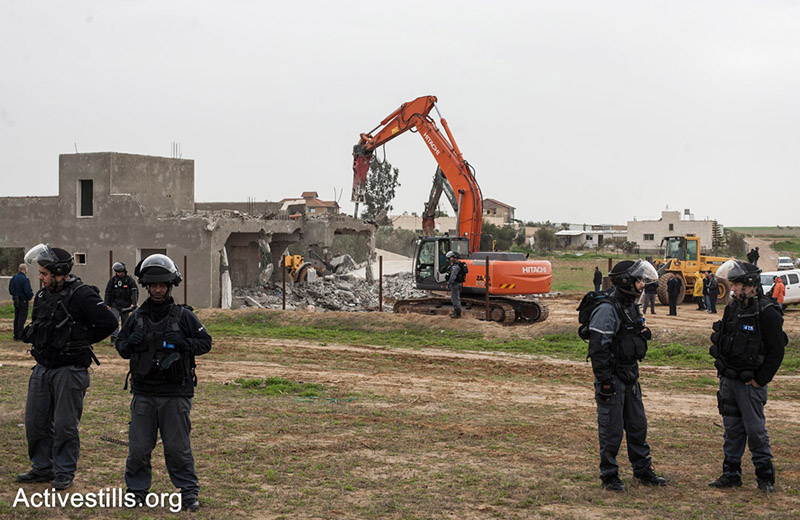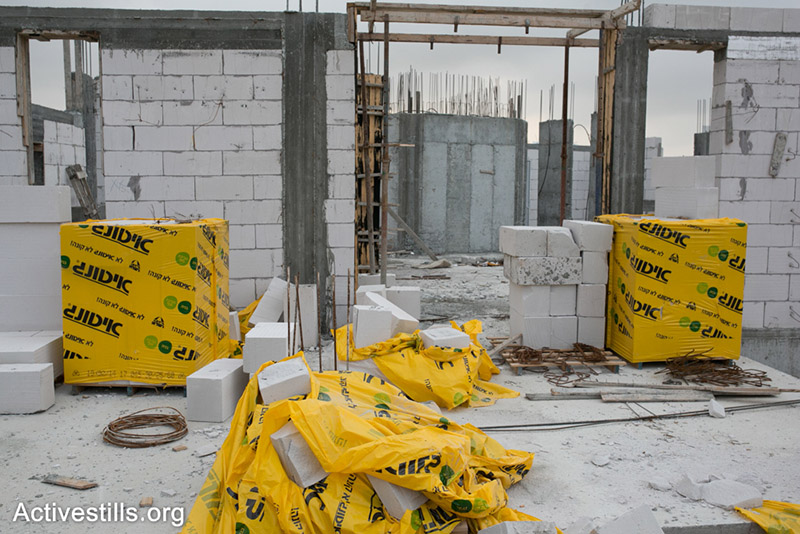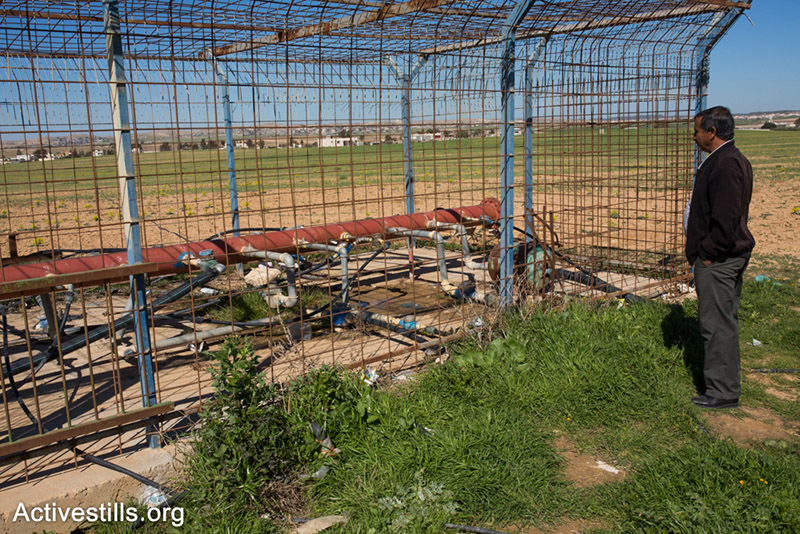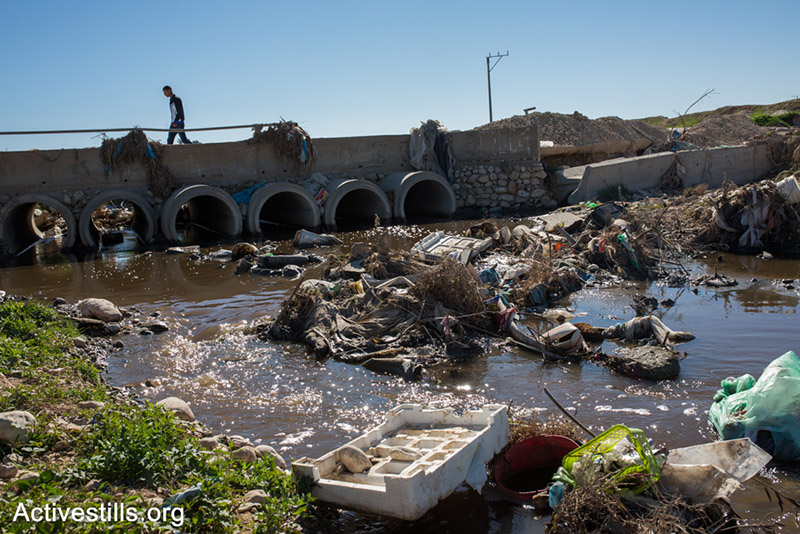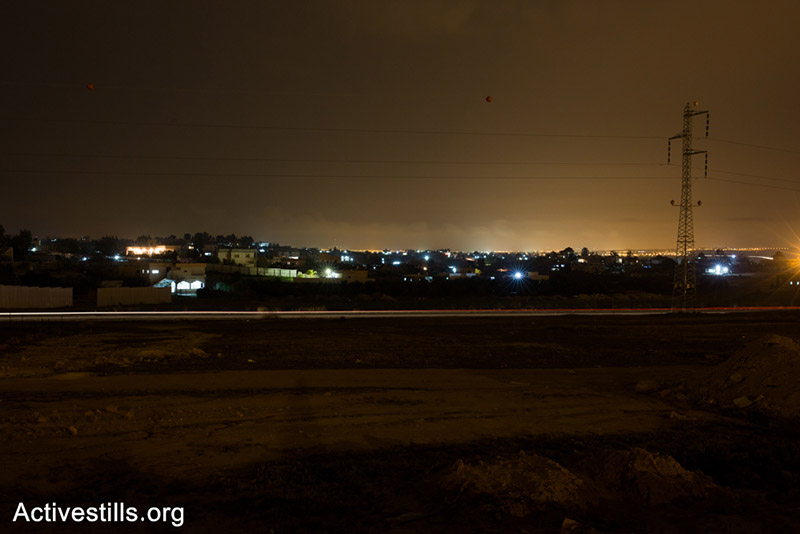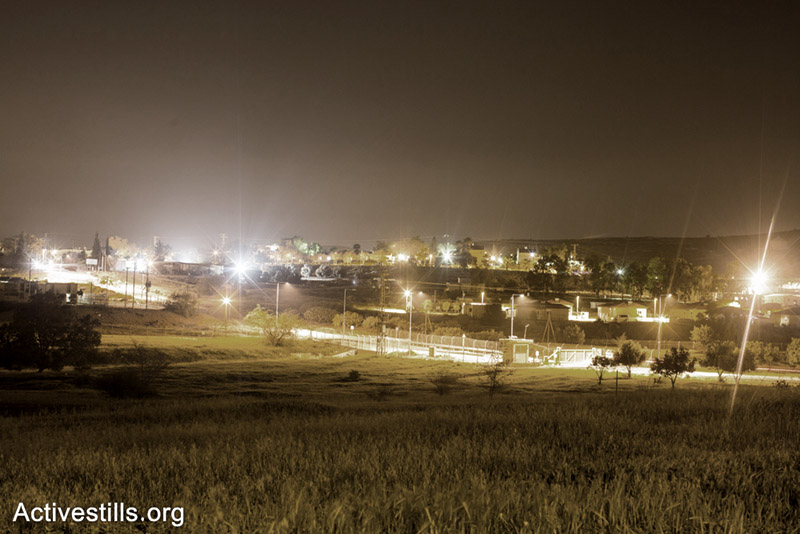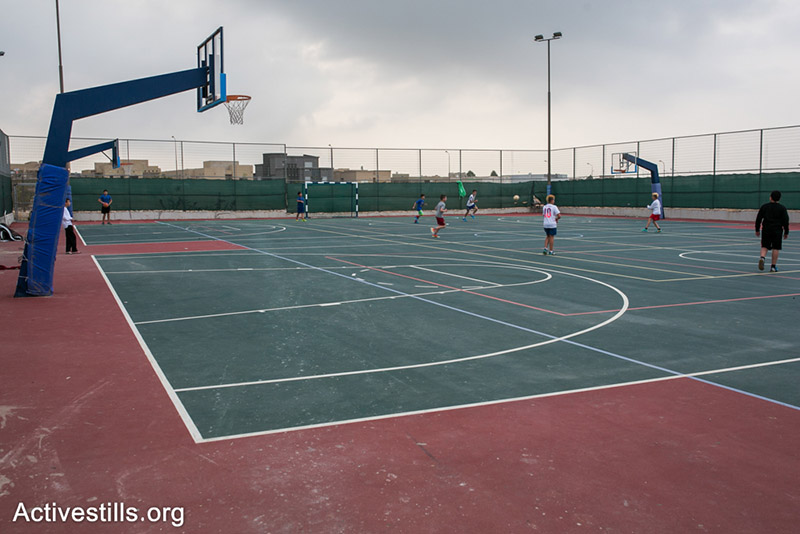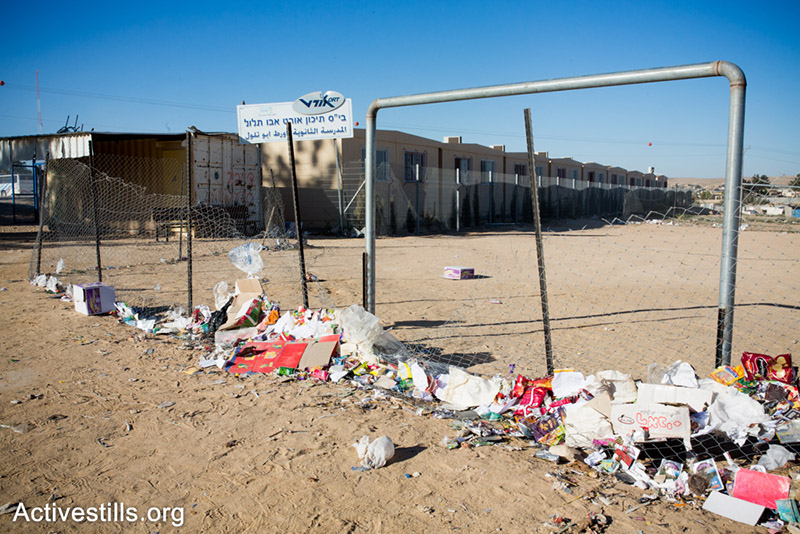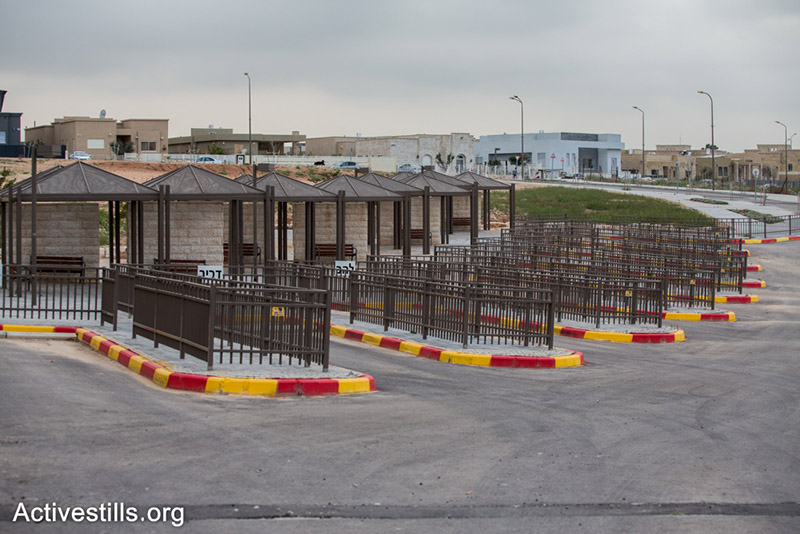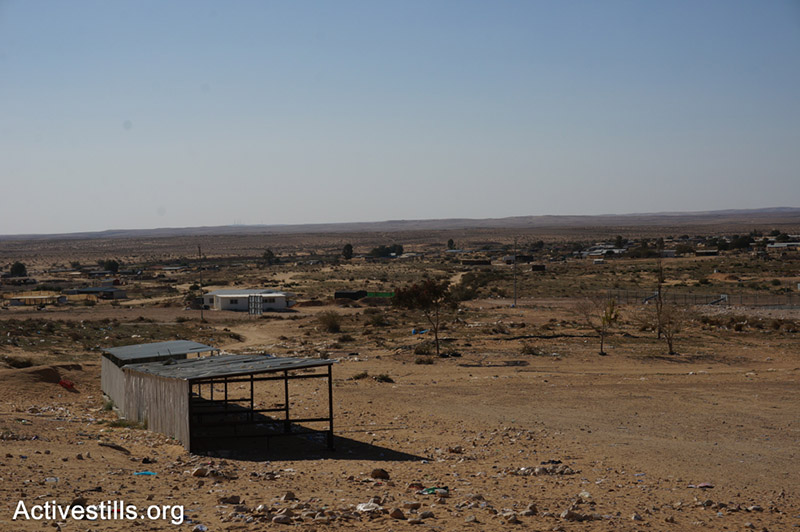In honor of International Day for the Elimination of Racial Discrimination, the Negev Coexistence Forum For Civil Equality and Activestills highlight the immense gaps between the recognized Bedouin villages and the Jewish towns in the Negev. The conclusion is clear: while the basic rights of the Bedouin residents have been recognized by the government, they are still violated on a regular basis.
Text: Michal Rotam / Negev Coexistence Forum For Civil Equality
Photos: Yotam Ronen / Activestills.org
Over the past decade, the Israeli government decided to recognize 13 previously unrecognized Bedouin villages in the Negev. While the recognition of two of the villages is still in its initial stage, the other eleven have already been geographically recognized. However, despite the change in policy, which was supposed to provide services, infrastructure and detailed planning for these villages, not much has changed much on the ground.
In practice, in the vast majority of these villages still lack infrastructure; the services are poor and inadequate for the large number of residents; and the policy of house demolitions as well preventing Bedouin from receiving building permits continue.
At the same time, over the last decade, three new Jewish towns were established in the Negev area – two of which were settled by religious Jews. Another four Jewish towns are currently in the advanced planning stages. These towns, populated by a relatively small number of residents, enjoy a variety of services allocated by the government, and receive building permits for new structures as well as extensions to existing ones. In addition, plans for at least twelve more towns are now on the agenda. Most, if not all, are designated for Israel’s Jewish population.
House demolitions
Given the denial of building permits in most of the recognized villages, their residents are subjected to a government policy of house demolitions, similar to the situation in the unrecognized villages. Both new houses, which are built due to population growth, as well as houses that were have been even slightly renovated, are considered illegal and are demolished by the Israeli Land Administration and the Ministry of Interior. When it comes to the demolitions, the state claims that no alternative solution exists for the dwellers; they are often left shelterless, with whatever personal belongings they managed to save before the demolition. On the other hand, the house demolition policy does not apply to the new Jewish settlements, no house demolition policy is implemented, and illegal buildings and farms are legalized retroactively.
Water
Connection to running water, which is recognized as a human right by the United Nations, is not a trivial issue within the recognized Bedouin villages of the Negev. Ten out of the 11 recognized villages only have central connection stations, and in order to bring the water to the houses, the residents must incur the costs of laying their own pipelines and infrastructure. The maintenance and water carriage costs must also be paid by the residents, and due to the low water pressure, the residents who live far from the water station must accumulate water in tanks. However, in Jewish towns in the Negev, every house is connected to running water and enjoys pipelines that reach their homes.
Paved Roads, sewage, garbage disposal, and electricity
Most of the paved roads in the recognized villages lead only to the local school and clinic. While the village of Tarabin A-Sana has paved roads, and in Derijat roads are under construction, the other nine villages have no paved roads or sidewalks. When it rains, driving becomes almost impossible, and some of the villages become completely isolated. In some of the villages, like Umm Batin and Abu Tlul, even the road to the local school or clinic is not paved.
Ten of the 11 recognized villages are not connected to a sewage disposal system. For lack of any other option, sewage is disposed in ways that harm the environment and the quality of life of the residents. Despite the fact that the eleven recognized villages are ascribed to two regional councils, some of them does not enjoy garbage collection services. While four of the villages do enjoy these services, there are three villages that do not. Every Jewish town of the Negev enjoys garbage disposal, as well as recycling centers.

In most of the recognized villages, one can find electric pylons that bring electricity to the local schools and clinics. Yet, in ten of the 11 villages, the residents’ homes are not connected to the national electricity grid, and therefore must use solar panels and generators in order to produce electricity on their own (this is similar to the case of the unrecognized villages). In some of the villages, like Umm Batin and Abu Tlul, even the schools and clinics are powered by generators.
Schools
While all 11 recognized villages contain elementary schools and middle schools, only six villages have their own high schools. For instance, in A-Sayed, there is no high school and the pupils must travel each day to the nearby township of Hura. The high school in Abu Tlul, a village with 4,500 residents, operates in makeshift structures.
Although the establishment of more schools in the villages is a positive step, there is still a lack of classrooms, especially since they serve the nearby villages as well.
After more than a decade since the establishment of the regional council and the recognition of the villages, according to most of the criteria we have examined, the situation of the villages remained pretty similar to the situation of the Bedouin unrecognized villages in the Negev. The basic rights of the residents of the Bedouin villages that were recognized by the state are still violated.
Click here to read the full report in Hebrew.


